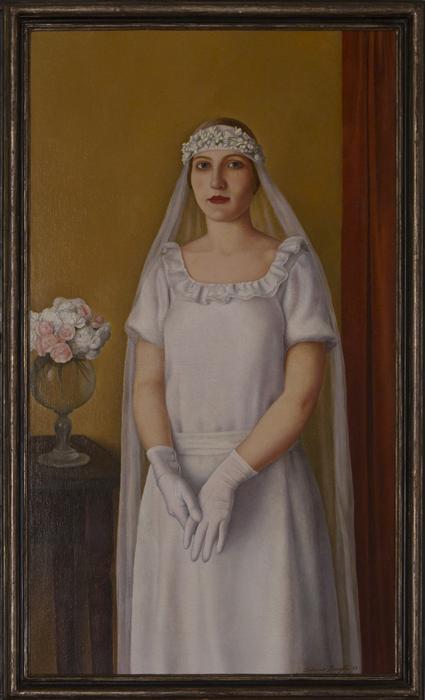La sposa, 1926
Antonio Donghi (Rome 1897 – 1963)
La sposa
oil on canvas
1926
cm 111 x 65
Donghi’s paintings are grounded in reality and identifiable by their tapered, sculpted forms, immersed in a poetic silence.
In his paintings, such as La Sposa [“The Bride”], one of the artist’s masterpieces, a continuous line draws out the polished, rounded forms with soft edges, breathing life into broad use of single colours: the fixed pose, lack of expression, the brightness of the colour, all recall a figure placed inside a glass bell.
In 1916, Antonio Donghi graduates from the Regio Istituto di Belle Arti in Rome.
He kickstarts the early 1920s with his first solo exhibitions in Rome and Milan, and very soon he is considered a high-profile exponent of the magical realism school.
Despite his reserved nature, his paintings attract an increasingly international audience: he participates in exhibitions in the United States and France, and later in Switzerland and Germany.
In 1929, he takes part in the Second Exhibition of the Novecento Italiano at the Permanente Museum in Milan, drawing the attention and admiration of the noted art historian, Roberto Longhi.
In the 1930s he also turns his attention to small-scale landscapes, travelling through the regions of central Italy. For Donghi, these are years of hard work and success in Italy and overseas: his works are selected for public and private collections.
In 1936 he is given a commission at the Regia Accademia di Belle Arti and high school for the arts of Rome. Alongside his regular themes of acrobats, ballerinas and characters, in this period he also incorporates the theme of landscapes (that becomes a prominent element of his paintings, especially in the post-war period), adopted in the wake of his frequent travels around the country.
In 1941 the Accademia d’Italia confers upon him an award for his artistic output.
